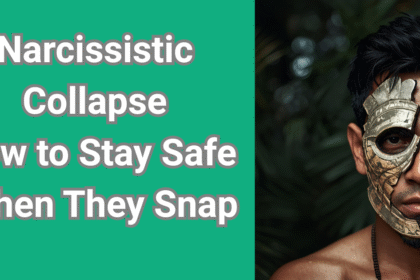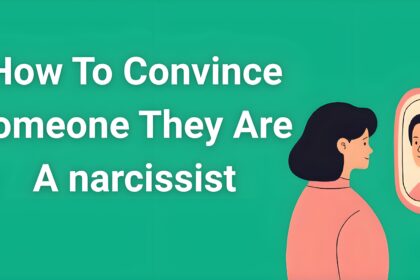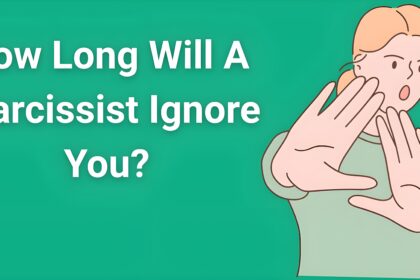When you first encounter the question “can two narcissist be in a relationship,” your immediate reaction might be a resounding no. After all, how could two individuals who are completely self-absorbed, constantly seeking admiration, and lacking empathy for others possibly form a lasting bond? The reality, however, is far more complex and surprising than you might expect.
- The Science Behind Narcissistic Attraction: Why Like Really Does Attract Like
- The Four Distinct Phases When Two Narcissists Enter a Relationship
- The Psychological Mechanics: Why These Relationships Become Addictive
- The Devastating Impact: What Really Happens to Both Partners
- Breaking Free: Recognizing the Pattern and Finding Your Way Out
- The Role of Trauma Bonding in Narcissistic Relationships
- The Children Factor: When Narcissistic Couples Become Parents
- Professional Help: When and How to Seek Support
- Frequently Asked Questions About Narcissistic Relationships
- Moving Forward: Healing and Prevention
The truth about narcissistic relationships challenges our basic understanding of human connection. While we typically imagine narcissists preying on empathetic, vulnerable individuals, research reveals that narcissists often find themselves drawn to other narcissists in ways that create some of the most volatile and destructive relationship dynamics imaginable.
Understanding whether two narcissists can be in a relationship requires us to dive deep into the psychology of narcissistic personality disorder, examine the science behind attraction patterns, and explore the devastating cycle that unfolds when two self-centered individuals attempt to build a life together. This exploration will help you recognize these patterns, whether you’re currently experiencing them, observing them in others, or trying to make sense of a confusing relationship dynamic in your own life.
The Science Behind Narcissistic Attraction: Why Like Really Does Attract Like
To understand whether two narcissists can be in a relationship, we must first examine the psychological principle known as assortative mating. This concept suggests that individuals are naturally drawn to partners who share similar characteristics, values, or personality traits. While this might seem logical for positive traits like kindness or humor, research has revealed that this principle applies even to darker personality characteristics.
A groundbreaking study published in Personal Relationships examined couples and found statistically significant correlations between partners who both scored high on narcissistic traits. This research demonstrated that narcissists don’t just randomly end up together—they actively seek out and are attracted to other narcissists, even when healthier relationship options might be available.
The attraction between two narcissists often begins during what researchers call the “golden period” of narcissistic relationships. During this initial phase, both individuals experience an intoxicating sense of recognition and validation. Each partner sees their own grandiose self-image reflected back at them, creating a powerful psychological feedback loop that feels like the perfect match.
Consider how this dynamic unfolds in real life. When two narcissists meet, they’re immediately impressed by each other’s confidence, charm, and apparent success. Neither partner triggers the other’s insecurities initially because both are presenting their most polished, impressive facades. This mutual admiration creates an addictive cycle where each person feels simultaneously superior and validated.
The neurochemical aspect of this attraction cannot be understated. When narcissists find someone who matches their energy and validates their self-importance, their brains release powerful reward chemicals similar to those experienced during drug use. This biological response helps explain why the question of whether two narcissists can be in a relationship becomes so complicated—the initial attraction is genuinely intense and chemically reinforcing.
The Four Distinct Phases When Two Narcissists Enter a Relationship
Understanding the progression of a relationship between two narcissists requires examining the predictable phases that nearly all such relationships follow. These phases help explain not only whether two narcissists can be in a relationship, but also why these relationships follow such destructive patterns.
Phase One: The Idealization Stage
The first phase occurs when both narcissists are still in their “best behavior” mode, carefully maintaining the facade that initially attracted them to each other. During this stage, the relationship feels electric and perfect. Both partners experience what they interpret as soul-deep connection, but what’s actually happening is mutual ego stroking on an unprecedented level.
Each partner feels they’ve finally found someone who “gets them” and appreciates their specialness. Conversations revolve around shared interests, similar worldviews, and mutual admiration of each other’s achievements. The relationship during this phase often appears enviable to outsiders, with both partners presenting as a “power couple” who seem perfectly matched.
However, this phase contains the seeds of its own destruction. The connection is entirely surface-level, based on shared narcissistic supply rather than genuine emotional intimacy. Neither partner is truly seeing or accepting the other as a complete human being with flaws and vulnerabilities. Instead, they’re each using the other as a mirror to reflect their own grandiose self-image.
Phase Two: The Competition Begins
As the relationship progresses and the initial novelty wears off, the second phase emerges with subtle but significant shifts in dynamics. The mutual admiration that characterized the first phase begins to transform into competition. Each partner starts to feel threatened by the other’s successes, attention from others, or moments in the spotlight.
This competitive element answers a crucial part of the question about whether two narcissists can be in a relationship. The competition isn’t healthy rivalry that pushes both partners to grow—it’s a zero-sum game where one partner’s success feels like the other’s failure. Arguments begin to emerge over seemingly trivial matters, but these conflicts are really about power, control, and who gets to be the “special one” in the relationship.
During this phase, both partners begin employing manipulation tactics they’ve perfected in previous relationships. Gaslighting, emotional withholding, and subtle put-downs become common as each person attempts to regain their position of superiority. The relationship becomes a battlefield where love is weaponized and vulnerability is seen as weakness to be exploited.
Phase Three: The Power Struggle Intensifies
The third phase represents the full emergence of the toxic dynamics that make relationships between two narcissists so destructive. By this point, both partners have dropped most pretenses of caring about the other’s wellbeing and are focused primarily on winning their ongoing power struggle.
This phase is characterized by increasingly frequent and intense conflicts that seem to come out of nowhere but always center around issues of respect, recognition, and control. Both partners become skilled at identifying and attacking each other’s insecurities and vulnerabilities. The relationship becomes emotionally abusive, with both individuals taking turns playing victim and perpetrator depending on who has the upper hand at any given moment.
What makes this phase particularly devastating is that both partners possess the manipulation skills and emotional intelligence to inflict maximum psychological damage on each other. Unlike relationships where one narcissist exploits a more vulnerable partner, here both individuals are equally equipped to engage in psychological warfare.
Phase Four: The Inevitable Breakdown
The final phase occurs when the relationship becomes so toxic and exhausting that it can no longer be sustained. However, the breakdown rarely happens cleanly or quickly. Instead, both narcissists often engage in a prolonged campaign of mutual destruction that can last months or even years.
During this phase, the relationship becomes characterized by dramatic breakups followed by equally dramatic reconciliations. Both partners struggle to let go because ending the relationship would mean admitting defeat, something neither narcissistic ego can easily accept. The trauma bonding that has developed makes it extremely difficult for either person to walk away permanently, even when they rationally understand the relationship is destroying them.
This phase often involves attempts to “win” the breakup by demonstrating who is more successful, attractive, or desirable without the other. Both partners may engage in revenge behaviors, public smear campaigns, or attempts to turn mutual friends and family members against their former partner.
The Psychological Mechanics: Why These Relationships Become Addictive
To fully answer whether two narcissists can be in a relationship, we need to understand the psychological mechanisms that keep these toxic partnerships alive long after they should have ended. The addictive quality of narcissistic relationships stems from several powerful psychological phenomena working in combination.
The intermittent reinforcement schedule created by the relationship’s extreme highs and lows triggers the same neurological pathways involved in gambling addiction. When two narcissists are together, the periods of intense connection and validation become unpredictable rewards that keep both partners psychologically hooked, even during the inevitable periods of conflict and emotional abuse.
Trauma bonding adds another layer of complexity to these relationships. As both partners inflict and receive emotional wounds, their nervous systems become dysregulated in ways that actually increase their attachment to each other. The very person causing the pain becomes associated with relief from that pain during brief periods of reconciliation or kindness.
The concept of narcissistic supply becomes particularly complicated when two narcissists are in a relationship. While each partner serves as a source of validation and ego reinforcement for the other, they’re also competing for external sources of supply. This creates a push-pull dynamic where each person simultaneously needs and resents their partner.
Cognitive dissonance plays a crucial role in maintaining these relationships beyond their expiration date. Both partners have invested significant time, energy, and ego in the relationship, making it psychologically difficult to admit that it’s fundamentally dysfunctional. Instead, each person engages in mental gymnastics to justify staying, often blaming external factors or believing they can change their partner.
The Devastating Impact: What Really Happens to Both Partners
When examining whether two narcissists can be in a relationship, it’s essential to understand the profound damage these relationships inflict on both individuals involved. Unlike the typical narcissistic abuse scenario where one person is clearly the victim, relationships between two narcissists create a complex web of mutual destruction that leaves both partners psychologically wounded.
The constant competition and emotional warfare gradually erode each partner’s sense of self-worth, despite their outward displays of confidence and superiority. Both individuals find themselves engaging in behaviors they previously wouldn’t have considered, becoming more manipulative, cruel, and emotionally unstable as the relationship progresses.
Sleep disturbances, anxiety, depression, and stress-related physical symptoms become common for both partners as their nervous systems remain in a constant state of hypervigilance. The unpredictable nature of the relationship means neither person can ever fully relax or feel secure, leading to chronic stress that impacts every aspect of their lives.
Social relationships suffer as both partners become increasingly isolated from friends and family members who grow tired of the constant drama and chaos. The relationship becomes all-consuming, leaving little energy or attention for maintaining other important connections.
Professional and personal goals often take a backseat to the relationship drama, as both partners become so focused on their power struggle that they neglect other aspects of their lives. Career advancement, creative pursuits, and personal growth all suffer as the relationship demands increasingly more emotional energy and attention.
Breaking Free: Recognizing the Pattern and Finding Your Way Out
For individuals who find themselves asking whether two narcissists can be in a relationship because they’re currently living this reality, understanding the pattern is the first step toward freedom. Recognition that you’re trapped in a mutually destructive dynamic can be both devastating and liberating.
The process of leaving a relationship between two narcissists is complicated by the fact that both partners have become trauma bonded and addicted to the intense emotional highs and lows. Traditional breakup advice rarely applies because the psychological mechanisms at play are more similar to addiction recovery than normal relationship dissolution.
Many people in these situations benefit from getting a comprehensive analysis of their specific relationship dynamics from someone who specializes in narcissistic abuse patterns. This type of professional assessment can help you understand exactly what you’re experiencing, why it feels so impossible to leave, and provide a clear roadmap for your specific situation. Sometimes having an expert examine your relationship patterns and provide personalized strategies can offer the clarity needed to break free from the cycle when everything feels confusing and overwhelming.
The recovery process often involves recognizing how the relationship has changed you and working to rebuild your sense of self outside of the competitive, validating dynamic you’ve become accustomed to. This reconstruction of identity can be challenging but ultimately liberating.
For those who cannot immediately leave their situation due to practical constraints like shared finances, children, or living arrangements, developing specific survival strategies becomes absolutely crucial. Learning how to protect your emotional wellbeing while still trapped in the dynamic can help minimize the ongoing damage while you work toward eventual freedom. This might involve understanding how to emotionally detach during conflicts, creating safe mental spaces, establishing covert support systems, and maintaining your sanity while planning your exit strategy. These survival skills are particularly important because leaving a relationship between two narcissists often requires careful planning and preparation rather than an immediate departure.
The Role of Trauma Bonding in Narcissistic Relationships
One of the most misunderstood aspects of narcissistic relationships is how trauma bonding keeps both partners attached even when the relationship becomes clearly destructive. When two narcissists are in a relationship, trauma bonding becomes particularly intense because both individuals are simultaneously creating and experiencing trauma.
Trauma bonding occurs when the nervous system becomes addicted to the stress hormones and subsequent relief cycles that characterize abusive relationships. The periods of intense conflict followed by passionate reconciliation create a biochemical rollercoaster that becomes literally addictive over time.
In relationships between two narcissists, this bonding is complicated by the fact that both partners are active participants in creating the trauma. Neither person can maintain the victim identity that often provides clarity in traditional narcissistic abuse situations. Instead, both individuals find themselves simultaneously perpetrator and victim, making it extremely difficult to recognize the destructive nature of the dynamic.
The shame associated with recognizing that you’ve become abusive toward your partner can keep people trapped in these relationships long after they recognize the toxicity. Many individuals struggle with accepting that they’ve engaged in manipulative or cruel behaviors, even when those behaviors were reactive responses to their partner’s abuse.
Understanding trauma bonding can be crucial for breaking free from these patterns. When you recognize that your attachment to your partner is partially chemical and trauma-based rather than based on genuine love or compatibility, it becomes easier to take the necessary steps toward healing and freedom.
Breaking trauma bonds requires specific strategies that address both the psychological and physiological aspects of the addiction. This process often involves a structured, day-by-day approach that helps rewire the nervous system’s response patterns over time. Many people find success with systematic recovery programs that guide them through the neurological detox process while teaching practical coping strategies for moments when the urge to reconnect feels overwhelming. These structured approaches recognize that willpower alone is rarely sufficient to overcome the biochemical addiction that trauma bonding creates.
The Children Factor: When Narcissistic Couples Become Parents
One of the most tragic aspects of relationships between two narcissists occurs when children become involved. The question of whether two narcissists can be in a relationship becomes even more complex when considering the impact on innocent family members who have no choice but to exist within this toxic dynamic.
Children of narcissistic couples often experience unique forms of psychological damage as they’re caught between two parents who are more focused on their power struggle than on providing stable, nurturing care. These children frequently become pawns in their parents’ ongoing competition, used as weapons against each other or sources of narcissistic supply for both parents.
The unpredictable emotional climate created by two narcissistic parents can severely impact a child’s developing nervous system and sense of security. Children in these environments often develop hypervigilance, people-pleasing behaviors, or their own narcissistic traits as survival mechanisms.
Many adult children of narcissistic couples struggle with understanding healthy relationship dynamics because their primary model of romantic partnership was characterized by competition, manipulation, and emotional abuse. This can lead to patterns of seeking out similar relationships in adulthood or, conversely, becoming so afraid of conflict that they avoid intimate relationships entirely.
For parents who recognize that they’re trapped in a mutually narcissistic relationship, the presence of children can provide both motivation to change and additional barriers to leaving. The complex logistics of co-parenting with a narcissistic ex-partner can feel overwhelming, particularly when both parents possess manipulation skills and are willing to use the children as leverage.
Professional Help: When and How to Seek Support
Recognizing that you’re in a relationship between two narcissists is often just the beginning of a complex healing journey. The specialized nature of these relationships means that traditional couples counseling or generic relationship advice may not be sufficient to address the deep psychological patterns at play.
Many individuals benefit from working with professionals who specialize in narcissistic abuse recovery and understand the unique challenges of mutual narcissistic relationships. These specialists can help you understand whether what you’re experiencing truly constitutes narcissistic abuse or if there are other dynamics at play.
Individual therapy focused on trauma recovery and identity reconstruction can be crucial for healing from these relationships. Both partners typically need to do significant personal work to understand how they developed narcissistic traits and what underlying wounds these behaviors were attempting to protect.
Group therapy or support communities specifically for narcissistic abuse survivors can provide valuable validation and practical strategies for recovery. However, individuals coming from mutually narcissistic relationships may need specialized support that addresses their role as both victim and perpetrator.
The recovery process often involves grieving not only the loss of the relationship but also the loss of the identity you constructed within that relationship. This can be particularly challenging for individuals whose narcissistic traits were largely reactive and who struggle to understand who they are outside of the competitive dynamic.
Frequently Asked Questions About Narcissistic Relationships
Can two narcissists ever have a healthy relationship?
While extremely rare, some relationships between two individuals with narcissistic traits can become more functional if both partners are willing to engage in extensive therapy and personal development work. However, true emotional intimacy and empathy remain significant challenges even with professional intervention.
How long do relationships between two narcissists typically last?
The duration varies greatly, but these relationships often follow cycles of breaking up and reconciling that can extend for years. The trauma bonding makes it difficult for either partner to make a clean break, even when both recognize the relationship’s toxicity.
Is it possible that I’m the only narcissist in the relationship?
If you’re asking this question, it suggests a level of self-awareness that’s actually uncommon in severe narcissistic personality disorder. Many people in these relationships discover they’ve developed reactive narcissistic behaviors as survival mechanisms rather than having a true personality disorder.
Can children from narcissistic couples have healthy relationships as adults?
With proper therapy and self-awareness, adult children of narcissistic couples can absolutely develop healthy relationship skills. However, this often requires significant work to unlearn dysfunctional patterns and develop emotional regulation skills that weren’t modeled in childhood.
What’s the difference between narcissistic traits and narcissistic personality disorder?
Narcissistic personality disorder is a clinical diagnosis that involves pervasive patterns of grandiosity, need for admiration, and lack of empathy that significantly impair functioning. Many people display narcissistic traits without meeting the full criteria for the disorder, particularly in response to trauma or stress.
Moving Forward: Healing and Prevention
The journey of healing from a relationship between two narcissists requires patience, self-compassion, and often professional support. Recovery involves not only ending the toxic relationship but also understanding how you became vulnerable to this dynamic and developing the skills necessary to prevent similar patterns in the future.
Many survivors find that their healing journey involves rediscovering their authentic self underneath the competitive, validation-seeking persona they developed within the relationship. This process of identity reconstruction can be both challenging and ultimately liberating as you reconnect with values, interests, and goals that existed before the relationship consumed your life.
Developing healthy boundaries becomes crucial for preventing future narcissistic relationships. This involves learning to recognize red flags early in dating relationships and having the confidence to walk away when you notice concerning patterns developing.
Building a support system of healthy, empathetic individuals can provide both accountability and encouragement as you work to develop more authentic ways of relating to others. Many survivors find that joining support groups or working with coaches who specialize in narcissistic abuse recovery provides valuable guidance during this transition.
The question of whether two narcissists can be in a relationship ultimately reveals the deep human need for connection and validation, even when that connection becomes destructive. Understanding these patterns can help you make more informed choices about your relationships and recognize when professional help might be beneficial for breaking free from toxic cycles.
Remember that recognizing these patterns in yourself or your relationships isn’t a source of shame—it’s the first step toward creating healthier, more fulfilling connections with others. With proper support and commitment to personal growth, it’s entirely possible to move beyond these destructive relationship patterns toward genuine intimacy and emotional wellbeing.






